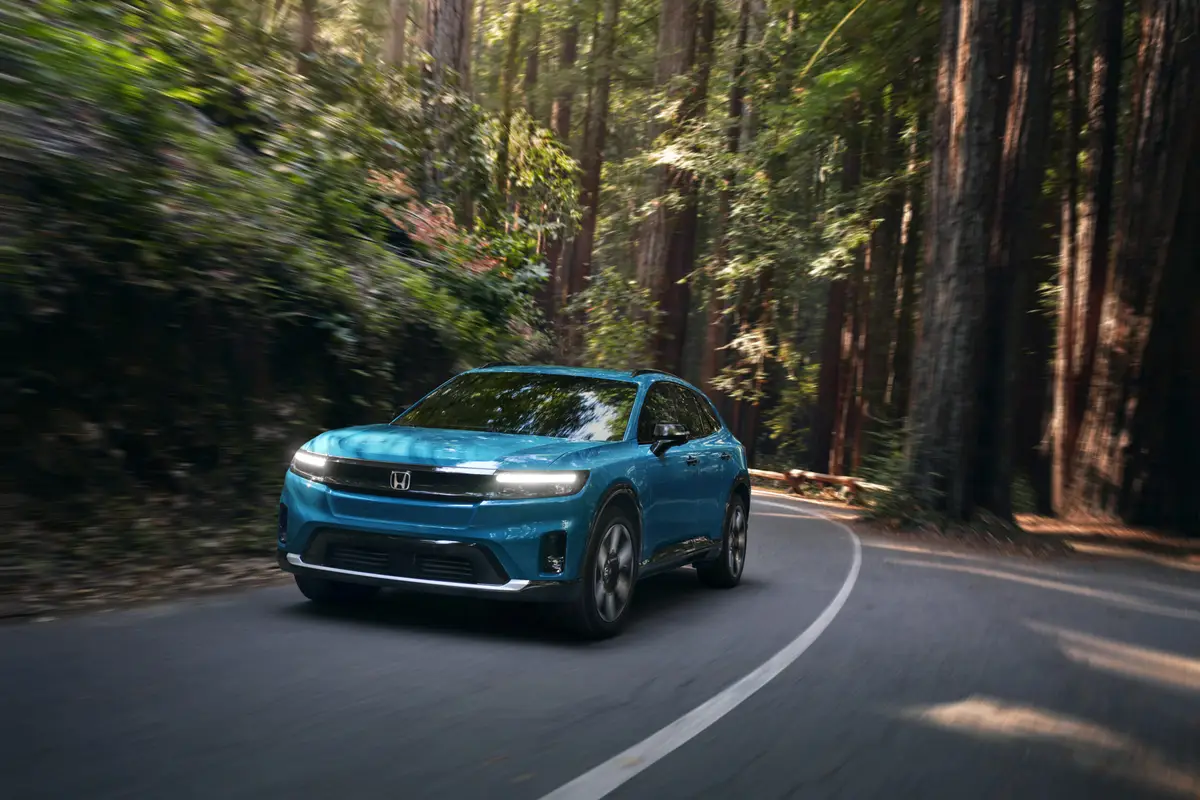The Morning Call and Mcall.com's view
Four-wheel drive passenger cars are not longer the wave of the future; they are the future and the future looks like it is here right now.
Yes, it looks like we are in the age of traction and automobile manufacturers aren’t just spinning their wheels. This is becoming a serious segment of the automotive marketplace and, as is the case of any product that is successful, everybody wants some of the traction action.
Entering the field this year is a company that doesn’t allow too much to get away from it, Toyota. It now offers its popular Camry in a four-wheel drive model known as the Toyota Camry All-Trac. As with many of the other four-wheel drive passenger cars available this year, it is a full-time four- wheel drive vehicle. No guessing, no thinking, no decisions to make. Just drive it and let it do the work.
One of the questions that certainly should be asked is whether or not full-time four-wheel drive is really necessary? This drive configuration is usually associated with winter and bad weather. There’s a lot of the year that isn’t winter and a lot of the winter doesn’t have snow each day.
Full-time four-wheel drive may thrive in the snow, but snow, ice or slush isn’t needed to appreciate it. Just the threat of snow, ice or slush can make believers out of some people.
The test car (supplied by J.H. Bennett Inc., 2300 Hanover Ave., Allentown) may have been just another nice family-type sedan if a late snow storm didn’t come along. But the snow arrived, the roads got nasty and the Camry All-Trac did what it was suppose to do. And it did it without a slip, an anxious moment or a skipped heartbeat.
Oh sure, with a little careful driving and common sense, most two-wheel drive vehicles – in either front-wheel or rear-wheel drive – could have made it through. But there is something about four-wheel drive that just gives a driver a little more confidence and security.
The All-Trac’s full-time, all-wheel drive system uses a center differential to distribute drive torque equally between the front and rear axles. The resulting action is quiet and smooth. It is very doubtful if many people will be able to tell it is four-wheel drive just by listening.
Normally, the front and rear axles turn independently. There is, however, an interior control switch allowing the driver to lock the center differential and synchronize front and rear axles for maximum traction. This control switch will only be needed in dire situations. The test car was driven through very trying conditions, including some mud for good measure, and there was never a need to hit this switch.
Other than having just a slightly higher stance, the Camry All-Trac is almost identical in appearance to the front-wheel drive sedan models in this line. And that means it is not a bad looking car. It is not, however, a very distinguished looking car. It has the sloping hood, small frontal are a, large greenhouse and high trunk similar to many other four-door sedans today.
But, then, the Camry was never meant to be the dazzler in the Toyota lineup; there are other models that can do just that. The Camry was designed to be a moderately priced family sedan that could compete in the highly competitive compact class. The Camry’s styling was redesigned for the 1987 model year so not surprisingly it is unchanged for this year.
A new interior feature, and one that will be seen more and more in the future, is the three-point rear seat belts. These belts, similar to the belts found up front on most cars, are located on each end of the seat. The middle passenger has a lap belt. (The Camry has automatic shoulder belts up front with manual lap belts.)
The five-passenger All-Trac has a wheelbase of 102.4 inches, length, 182.1 inches; width, 67.4 inches; height, 55 inches, and curb weight of about 3,000 pounds. As can be expected, front seat room is good And surprise, rear seat passengers will have sufficient leg room even if the front seats are extended fully aft. The trunk measures a decent 15-cubic feet.
Essential controls are within easy reach and the instrument panel, though somewhat sparse, is easy to read. The only instrument, in addition to the obligatory speedometer and fuel gauge, is a heat gauge. Conspicuous by its absence is a tachometer, which almost seems like a necessity in a car with four-wheel drive and manual transmission.
Driving the All-Trac is not all that difficult or demanding, providing one knows how to operate a five-speed manual transmission. (The manual is the only transmission available in the All-Trac. This, obviously, could be a limiting factor with some buyers.) Handling is responsive and, again, it would be difficult to tell the difference between it and a two-wheel drive car. The suspension features MacPherson struts up front and independent dual links with MacPherson struts in the rear. The system is tightened up somewhat over the two-wheel drive Camry but the ride is still smooth.
Always impressive in a Toyota is the engine and the All-Trac is no exception. It has a dual overhead cam, 16-valve four-cylinder engine that measures 2-liter/121-cubic-inches and is rated at a healthy 115 horsepower at 5,200 rpm and 124 foot pounds torque at 4,400 rpm. Performance is lively and the power is spread throughout the driving range.
The twin-cam, four-valve-per-cylinder has been around much longer than Toyota. But this company has done more than its share to bring this engine back in recent years. In fact, almost every Toyota model is equipped with this type of engine. The chief advantages of the four-valve-per -cylinder engine is good horsepower per displacement and clean running, two important factors in this day and age. And besides everything else, it just looks good under the hood.
The engine/transmission combination averaged 16 miles per gallon for city driving and 25 mpg over the highway. Because of the engine’s relatively high 9.3:1 compression ratio, unleaded premium was used.
Base price for the All-Trac is $13,428 and includes a nice level of trim and appointments. Full price on the test car came to $15,558. Extra costs included: delivery, $330; 4-speaker package, $140; air conditioning, $795; multiplex combo, $395; floor mats, $98; trim rings, $69; deluxe stripe, $134, and undercoating, $169.
The basic new vehicle warranty for 1988, which includes virtually all components on the vehicle, has been increased to 36-months/36,000-miles (it had been 12/ 12,000). Emission control device coverage is 5-years/50,000-miles while corrosion perforation is 5-years/unlimited mileage.
Latest news



